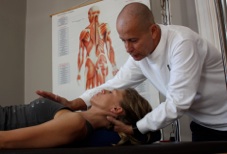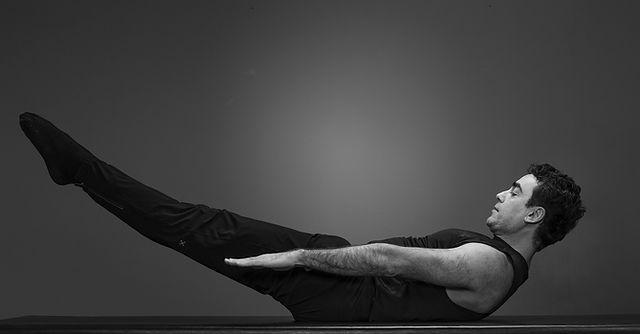
When you're first teaching, Structuring your Pilates class takes time and effort. You spend time preparing your class, listing the exercises, deciding if they work together as they transition through strength, mobility, flexibility, and co-ordination. You're continuing your Pilates Education.
Initially you need notes to remind yourself of the order you're going to teach. You'll still be developing your teaching style, deciding on your "voice".
In time of course this all falls into place, you no longer feel chained to your notes, you can deliver your class almost automatically. Continuing your Pilates education is paying off.
There's a definite learning curve when mastering a new skill.
The Conscious Competent Learning Model
- First you're unconsciously incompetent - you don't know what you don't know (the start of your Pilates education)
- Then you're consciously incompetent - you realise what you don't know (in the midst of your course)
- Now you're consciously competent - you know you can learn this new skill but it takes concentration
- Finally you're unconsciously competent - it's become automatic, natural.
- https://www.revolutionlearning.co.uk/article/conscious-competence-learning-model/
It's now, when you've been teaching Pilates for a while, gaining experience you can sharpen your skills to become the great Pilates teacher you want to be.

Anyone Can Learn the Pilates Repertoire...
Yes. I believe learning the repertoire is the easiest part of your Pilates teaching journey. Being able to perform the exercises beautifully will give you a great sense of satisfaction but it doesn't mean you'll be a great teacher.
It's More Than Performance
Teaching movement whether to a group or an individual is a mixture of the physical, the psychological, intuition, observation and awareness. Noticing your client is performing any particular exercise safely is a given. In addition you need to observe how easily their body is dealing with the exercise.
One Size Doesn't Fit All
When watching a client perform an exercise, consider how it looks. Does it seem natural or do you see struggle. In the years I've been teaching I've yet to meet someone who is equally strong, flexible, mobile or co-ordinated.
This is the reason I don't grade my sessions. The Pilates repertoire has a well defined beginner, intermediates and advanced range of movement. Someone may be strong but lack flexibility and or mobility. They'll find the full 100 relatively easy because it's strength dominant. The Saw however, a combination of rotation and forward flexion may be a challenge. I'm reminded when working with clients how every Pilates exercise is a combination of all elements from strength to co-ordination. This is the reason it's such a great method for everyone and all abilities. nualacoombspilates.com/healthy-ageing

Hiding Behind Strength
A strong client can hide their lack of control, using their strength to "work" the exercise. I mean their strength over-takes any benefit from the correct sequencing of the set up for the exercise.
Simply being able to support the weight of the head and limbs for the full 100 isn't proof the work is coming from the inside (stabilising muscles) out (the superficial muscles). When observing this strong client you might see the following:
- General gripping in the body
- Internal rotation of the shoulders
- Forward head position
- Loss of neck
- Strain in the upper Trapezius as they push down
- Over-stretching of the arms
- Loss of abdominal connection (doming)
- Mis-alignment of the Pelvis - either arching or tilting back
- Their breath may be forced and loud
You probably won't see all of the above but you will certainly see some. This client is working too hard. Putting the emphasis on the muscles moving them rather than starting from their deeper stabilising muscles. They will seem to almost attack the start of the exercise.
Cueing For Quality
Conversational cueing works best when teaching Pilates. By that I mean giving clients information in a way they can relate to. Rather than a list of objectives - Align you Pelvis, drop your shoulders, engage your abdominals. Describe how changing these placements might feel or look. Drawing the client's attention to the issue rather than giving them direct instructions to fix it.
Our goal as Pilates teachers is to inform our clients in such a way they begin to self-correct. For example that strong client "working" the full 100. It could help them to ask "do you notice your shoulders are up round your ears?" This may well be enough for them to get them to let them go. When you see this change confirm it by asking how the different position feels. Did they notice the release of tension in their neck and how their collar bones (clavicle) became wider.
Eventually with this style of cueing clients will begin to notice how subtle changes in alignment take the stress out of some exercises. Their body awareness will improve with help from you. https://nualacoombspilates.com/changing-habits
Your Why? - Their Why?
Ensure you and your client are on the same page. Get into the habit when you notice something needing change to make sure your client is also aware and the reason you want changes made. When teaching your client is a collaboration results will be permanent rather than just for the class. They will become part of their natural alignment and behaviour.
In Conclusion
I've talked about developing your Pilates teaching skills with Continuing Pilates education. Moving from a debutante to an experienced teacher trusting your intuition and observations to work with your clients to get the best results. I've touched on the importance of:
- Developing your observational ability
- It's not enough to be able to perform the exercises well
- Using conversational cueing to help clients
- The importance of developing and knowing your teaching style
- Realising not all exercises are a natural fit for everyone
- How clients will use their easiest route to an exercise
- Realising the need for you and your clients to be on the same page.
- Accepting your work with the client is a collaboration - they are not a puppet
- The importance of continuing Pilates education.
Questions?
Email me on Nuala@nualacoombspilates.com